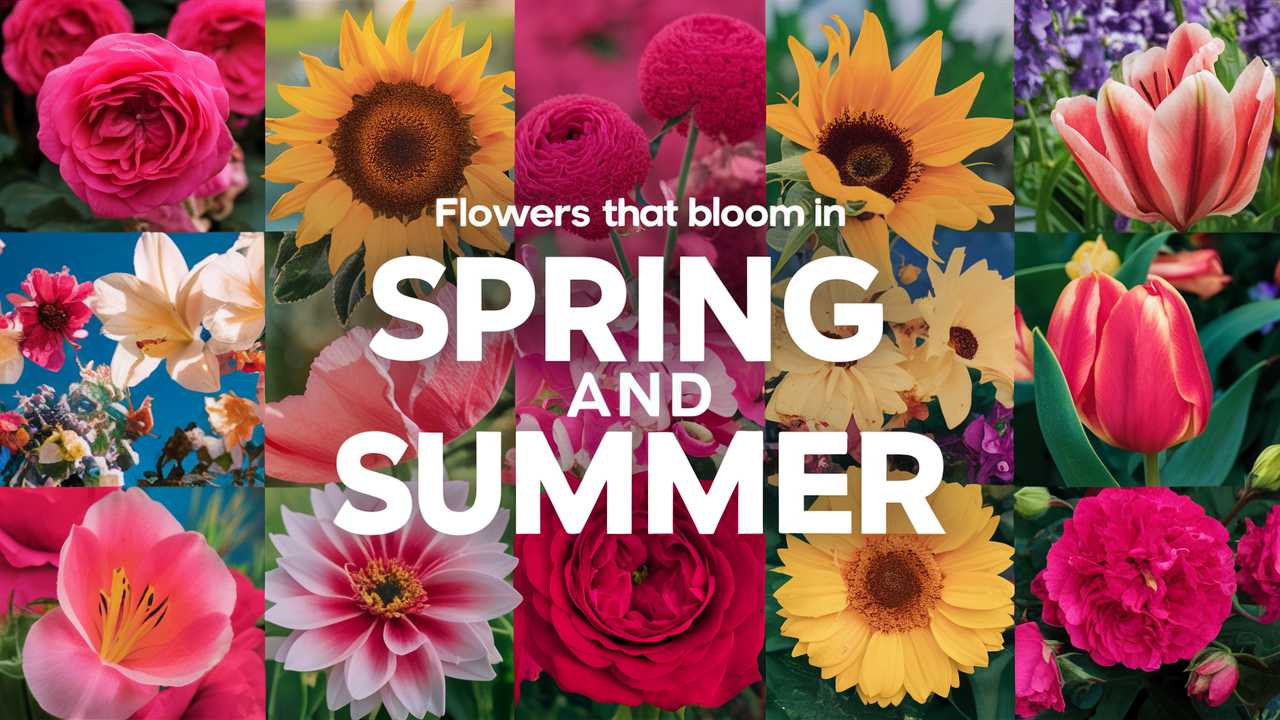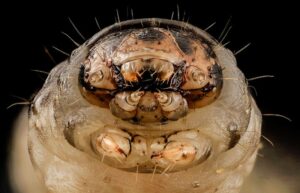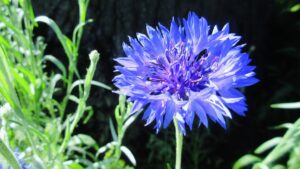In this post, we will explore an array of remarkable flowers that bloom during these seasons, bringing joy and beauty to our outdoor spaces.
Ice Plant
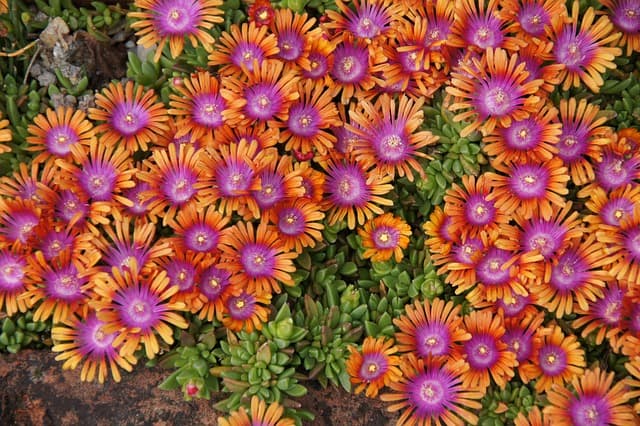
The Ice Plant, known scientifically as Delosperma, is a succulent ground cover that thrives in warm climates. With its fleshy, ice-like leaves and colorful daisy-like flowers, it creates an appealing visual impact. This perennial blooms in vibrant shades of pink, yellow, or white, typically starting in late spring and continuing until mid-summer. What makes Ice Plant especially alluring is its ability to thrive in poor, well-drained soils and full sun, making it ideal for rock gardens and xeriscapes. Moreover, Ice Plant is drought-resistant, making it a practical choice for gardeners looking to conserve water.
The flowers open in the morning and close in the evening, creating a delightful spectacle each day. Perfect for attracting pollinators, such as bees and butterflies, Ice Plant fosters a thriving ecosystem while offering low-maintenance beauty.
Garden Phlox
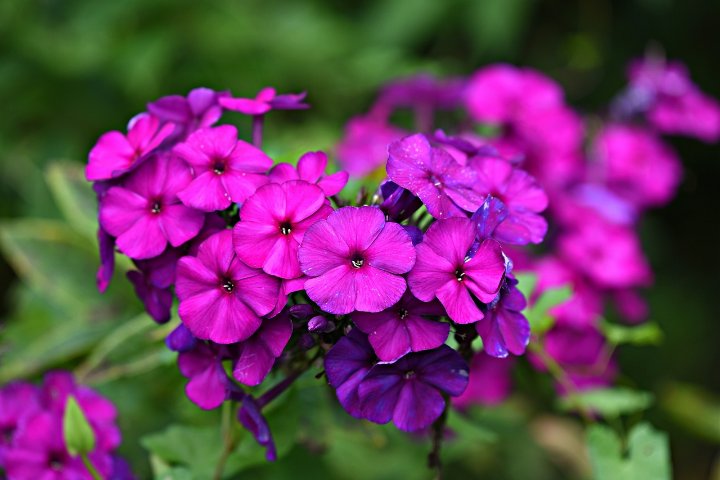
Phlox paniculata, commonly known as Garden Phlox, commands attention with its rich colors and sweet fragrance. Blooming in summer, this perennial showcases clusters of flowers that are available in virtually every color of the rainbow, including vivid pinks, whites, reds, and purples. Garden Phlox not only adds vibrant color to borders and flower beds but also flourishes in various conditions, from full sun to partial shade.
These flowers are known for attracting butterflies and hummingbirds, making them a popular choice for wildlife gardens. Additionally, Garden Phlox has a pleasant aroma, which can enhance evening strolls through the garden. However, it’s important to note that they may require some care, including deadheading spent blooms and ensuring adequate moisture during dry spells, to keep them blooming abundantly.
Stella de Oro Daylily
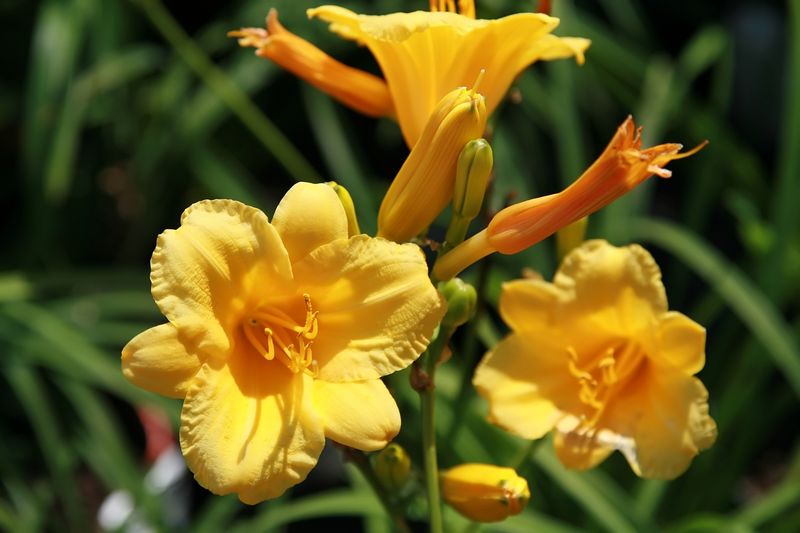
Stella de Oro daylilies (Hemerocallis ‘Stella de Oro’) are a standout in any garden, providing an exceptional burst of color during spring and summer. These perennial wonders produce delicate yellow flowers that bloom profusely, often lasting for weeks. They are especially loved for their hardiness; once planted, they continue to return year after year, requiring minimal maintenance.
What makes Stella de Oro daylilies so special is their extended flowering period; they start blooming in late spring and can last until early fall. Not only are they visually stunning, but they are also versatile—they thrive in a variety of soil types and can tolerate drought conditions once established. With their resilience and beauty, these daylilies are a favorite for both gardeners and landscapers alike.
Becky Shasta Daisy
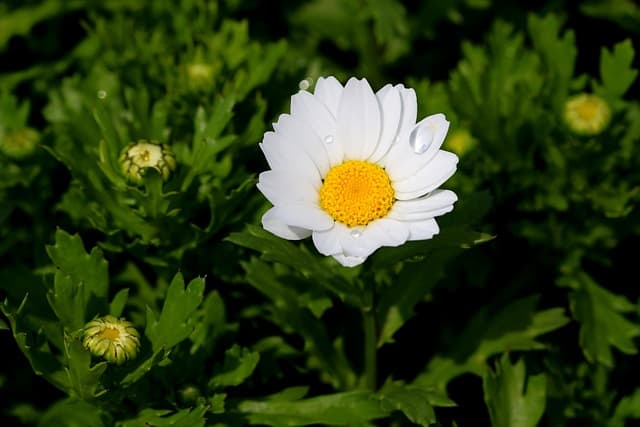
The Becky Shasta Daisy (Leucanthemum x superbum ‘Becky’) epitomizes the quintessential summer garden with its cheerful white blooms and sunny yellow centers. Blooming from late spring to early summer, this perennial is appreciated for its elegant, long-lasting flowers that sway gracefully in the breeze. With sturdy, upright stems, they make excellent cut flowers for arrangements, adding freshness to indoor spaces.
Becky Shasta Daisies prefer full sun and are relatively low-maintenance, requiring only periodic division to maintain vigor. They are also known for attracting pollinators, including bees and butterflies. Their ability to thrive in a range of soil types makes them accessible for novice gardeners, while their striking appearance ensures they remain a staple in flower beds and borders.
Perennial Salvia
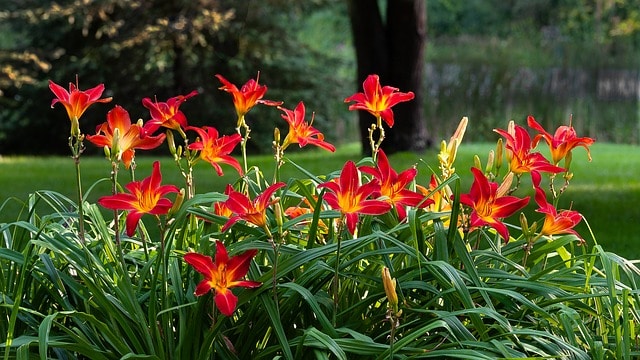
Salvia nemorosa, commonly known as Perennial Salvia, brings a sense of tranquility to gardens with its spiky flowers that range from blue and purple to pink. Blooming from late spring through summer, these perennials are particularly helpful in attracting hummingbirds and butterflies, turning your garden into a lively habitat.
Perennial Salvia thrives in sunny locations with well-drained soils, making them an excellent choice for borders and rock gardens. Their upright growth habit allows them to stand tall amongst other flowers in a mixed-bed planting. They are drought-resistant once established, representing a low-maintenance option for individuals looking to simplify their gardening tasks while still enjoying an array of colors and movement in their spaces.
Russian Sage
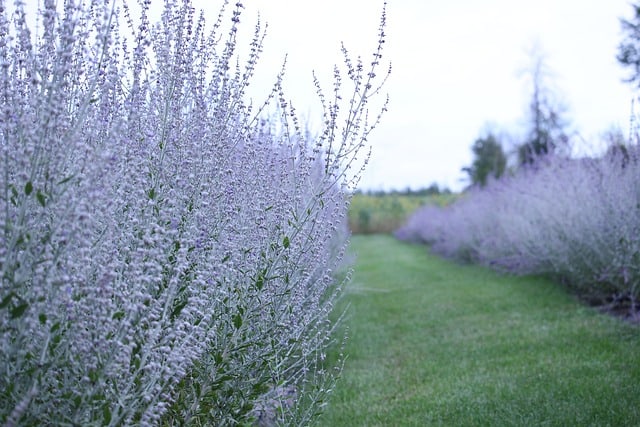
One of the most distinctive and hardy perennial flowers is Russian Sage (Perovskia atriplicifolia). Known for its silvery-green foliage and airy spikes of lavender-blue flowers, this plant blooms from early summer to fall, exuding a pleasant scent reminiscent of its Mediterranean origins. Russian Sage thrives in hot, dry conditions and is perfect for xeriscaping—helping to conserve water while lessening the need for fertilizers.
The lacy structure of Russian Sage adds a dynamic sense of texture to any garden design, and its drought resistance makes it an increasingly popular choice for those looking to cultivate low-maintenance landscapes. Not only does it provide aesthetic charm, but it also serves as a refuge for various beneficial insects.
Yarrow
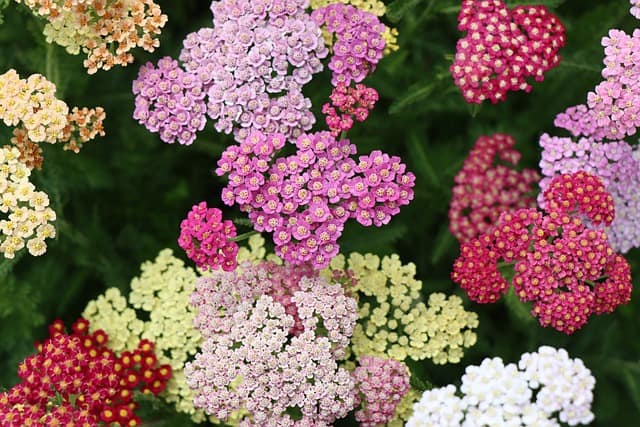
Achillea millefolium, commonly known as Yarrow, is a perennial flower cherished for its ability to thrive in a diverse range of conditions. Its feathery foliage and clusters of tiny flowers bloom in late spring and continue through summer, presenting vibrant hues of yellow, pink, red, and white. Yarrow is known for its medicinal properties and historical significance; it has been used for centuries in herbal remedies.
Gardeners appreciate Yarrow for its aromatic qualities and for its ability to attract pollinators while repelling pests. A versatile plant, Yarrow can be used in borders, wildflower gardens, or as a companion plant. Its resilience to drought and poor soil conditions make it an excellent choice for both ornamental and practical gardening pursuits.
English Lavender
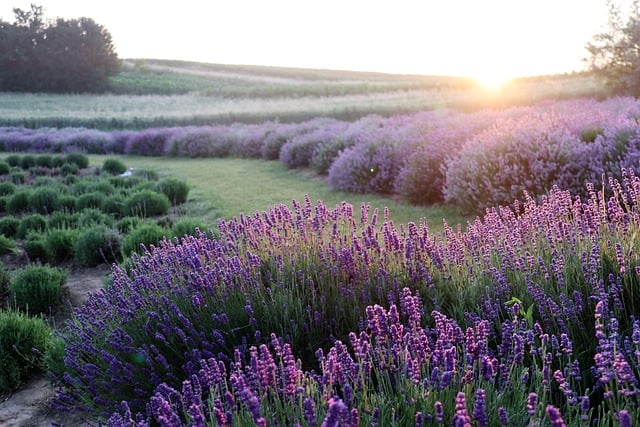
Few plants offer the elegance and versatility of English Lavender (Lavandula angustifolia). Boasting stunning floral spikes and a calming fragrance, this perennial thrives during the summer months, often blooming from early to late summer. English Lavender is not only aesthetically pleasing; its aromatic qualities make it a staple ingredient in aromatherapy and culinary delights.
Lavender prefers well-drained, sandy soil and full sun, making it a favorite for cottage gardens and formal landscapes alike. Beyond ornamental value, it attracts pollinators, specifically bees, contributing to a healthy ecosystem. When dried, its buds retain their scent and color, making beautiful additions to potpourris, sachets, and floral arrangements.
Coneflower
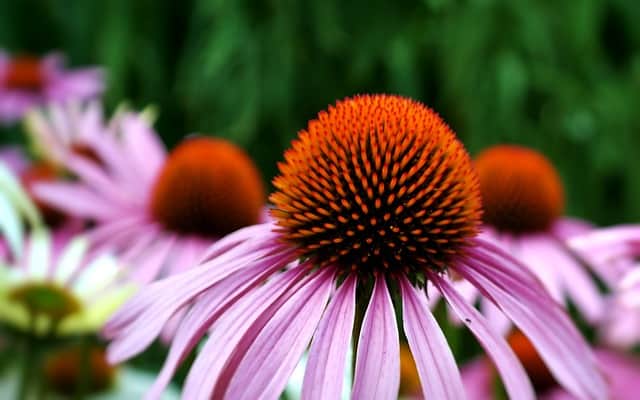
The Coneflower, or Echinacea, is another gem of a perennial that flourishes in gardens come summer. Known for its unique, daisy-like appearance with a prominent central cone, these flowers bloom in shades of purple, pink, and white. Coneflowers not only add striking color to gardens but also serve crucial roles in supporting pollinators like butterflies and bees, making them an indispensable addition to any wildlife-friendly garden.
Blooming from mid-summer to fall, coneflowers are hardy and drought-resistant, often thriving in less-than-ideal soil conditions. They are easy to care for and their seed heads also provide sustenance for birds during the winter months, creating year-round interest in your garden.
Threadleaf Coreopsis
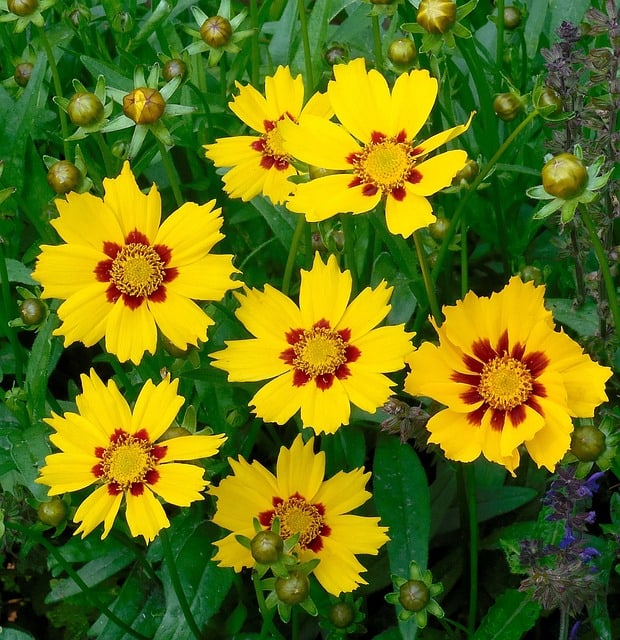
Coreopsis verticillata, also known as Threadleaf Coreopsis, is notable for its stunning array of yellow daisy-like flowers that emerge en masse during the summer months. This perennial is cherished for its fine, threadlike leaves that lend a lacy texture to flower beds. Blooming from early summer to fall, Threadleaf Coreopsis is an excellent choice for gardeners looking to create a bright and cheerful atmosphere.
These resilient flowers thrive in poor, dry soils and are very adaptable, making them perfect for borders, meadow gardens, or even container plantings. They are low-maintenance and grow well in full sun, providing a vibrant burst of color without demanding excessive water or care.
Blue Chip Butterfly Bush
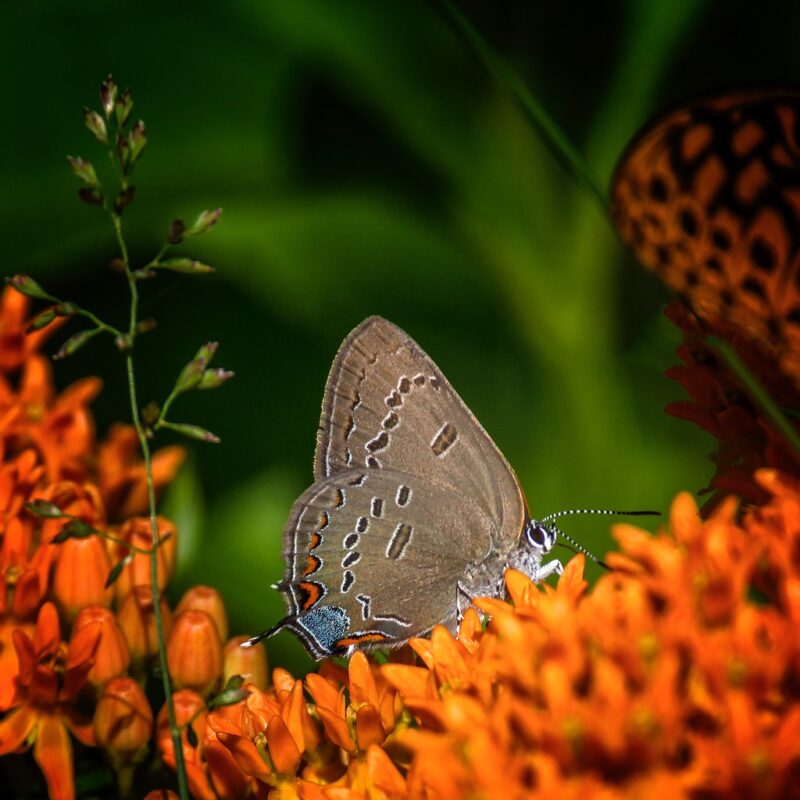
The Blue Chip Butterfly Bush, scientifically known as Buddleja davidii ‘Blue Chip’, is a compact version of the popular butterfly bush that produces an abundance of fragrant, lavender-blue flowers. Blooming from summer to fall, this perennial is a magnet for butterflies, making it a fantastic choice for pollinator gardens.
Despite its smaller stature, Blue Chip Butterfly Bush packs a punch with its prolific blooming habits and lovely aroma. It prefers well-drained soil and full sun, adding vibrant color to any garden while enhancing biodiversity. This variety is particularly suited for smaller landscapes or container gardening, bringing wildlife close to home.
Black-Eyed Susan
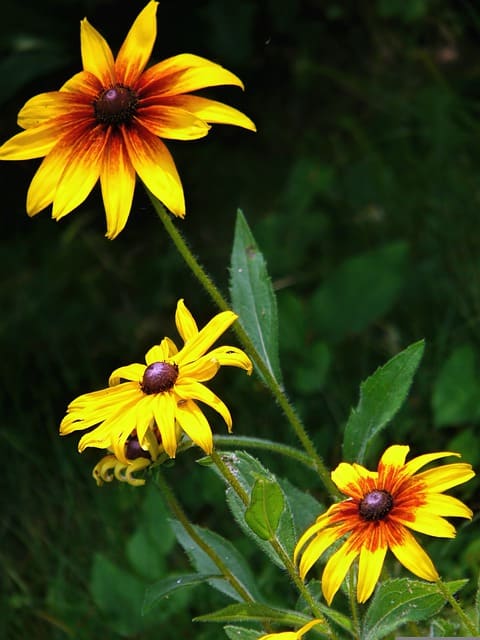
The Black-Eyed Susan (Rudbeckia hirta) is a quintessential wildflower that graces gardens with its sunny yellow petals and dark, central cones. Blooming from mid-summer to fall, these hardy perennial flowers are known for their resilience in various gardening conditions. Often found in meadows and naturalized landscapes, Black-Eyed Susans are a favorite among gardeners for their low-maintenance requirements, drought tolerance, and colorful aesthetic.
Ideal for attracting bees and butterflies, these cheerful blooms bring life and motion to any outdoor space. They thrive best in full sun and well-drained soil and blend beautifully in cottage gardens, borders, or wildflower patches. Their long-lasting blooms also mean they can serve as delightful cut flowers for arrangements indoors.
Autumn Joy Stonecrop
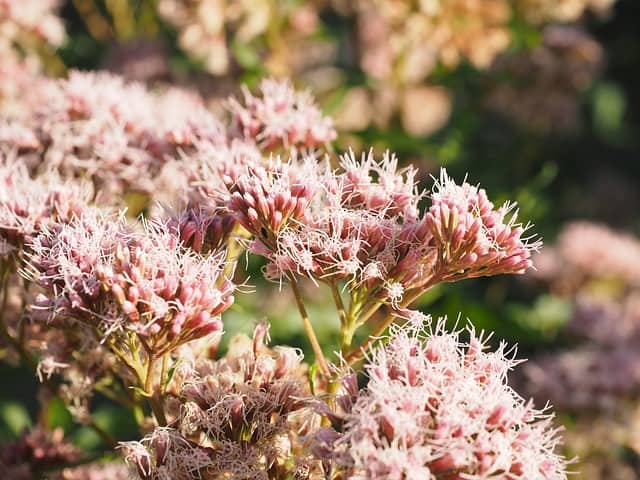
The Autumn Joy Stonecrop (Sedum ‘Autumn Joy’) is a delightful succulent perennial that captures the beauty of late summer and early fall. With its sturdy, upright stems, this flowering plant showcases clusters of coral-pink flowers which mature to a deep rust color as autumn approaches. Blooming from mid-summer to fall, this hardy perennial stands out for its adaptability to dry conditions and poor soil.
The fleshy leaves of Stonecrop add texture and visual interest to garden beds, while the flowers serve as a food source for pollinators like butterflies. Autumn Joy requires minimal care, thriving in full sun and well-drained soil, making it an ideal addition to rock gardens or drought-resistant landscapes.
Catmint
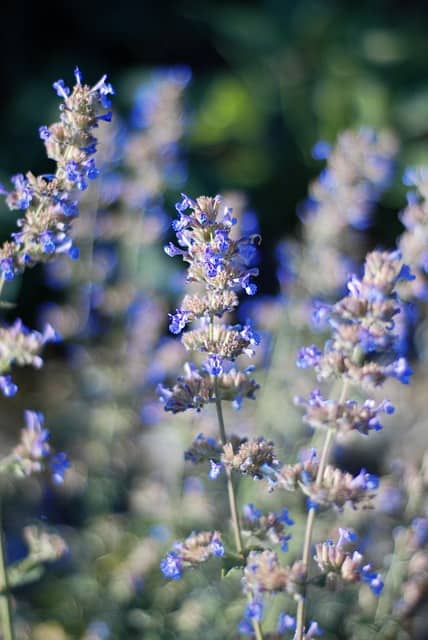
Catmint (Nepeta), often mistaken for its feline allure due to its effects on cats, is celebrated for its beautiful lavender-blue flowers that bloom throughout late spring into summer. This perennial is known for its hardiness and ability to tolerate drought, growing easily in various soil conditions. Catmint’s fragrant foliage and blooming nature create an enchanting atmosphere in any garden space.
The compact size and dense foliage of Catmint make it perfect for edging or as a ground cover, while its long bloom period provides sustained color in the garden. Its aromatic leaves can also deter pests, making it an excellent companion plant for other flowers and vegetables.
Spiked Speedwell
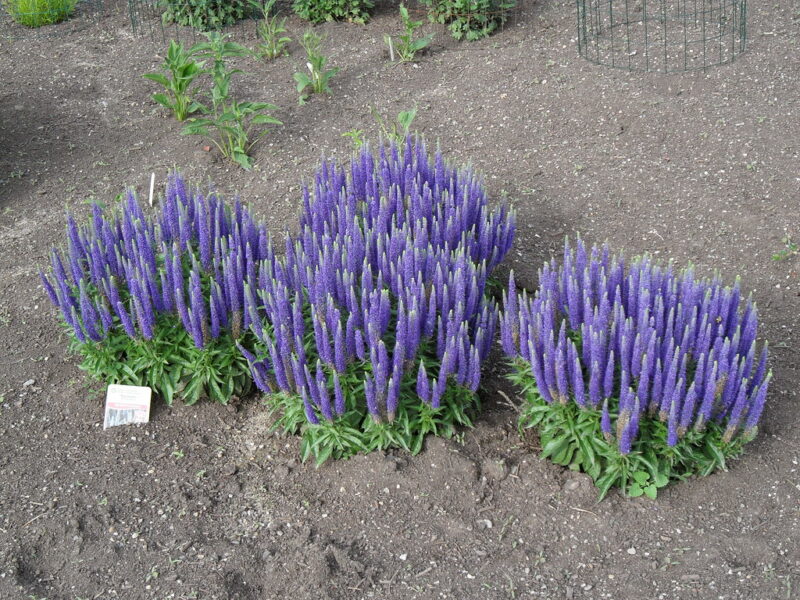
Veronica spicata, also known as Spiked Speedwell, presents striking vertical flower spikes that bloom in hues of blue, violet, and pink during the summer months. These statuesque plants are particularly effective in adding height and structure to flower borders or as accents in perennial gardens.
Spiked Speedwell flourishes in well-drained, sunny spots and requires minimal maintenance. Its ability to withstand drought further augments its appeal, while its flowers attract bees and butterflies, contributing to a vibrant garden ecosystem. Their adaptability and stunning appearance make them a popular choice among gardeners seeking both beauty and practicality.
Red Hot Poker
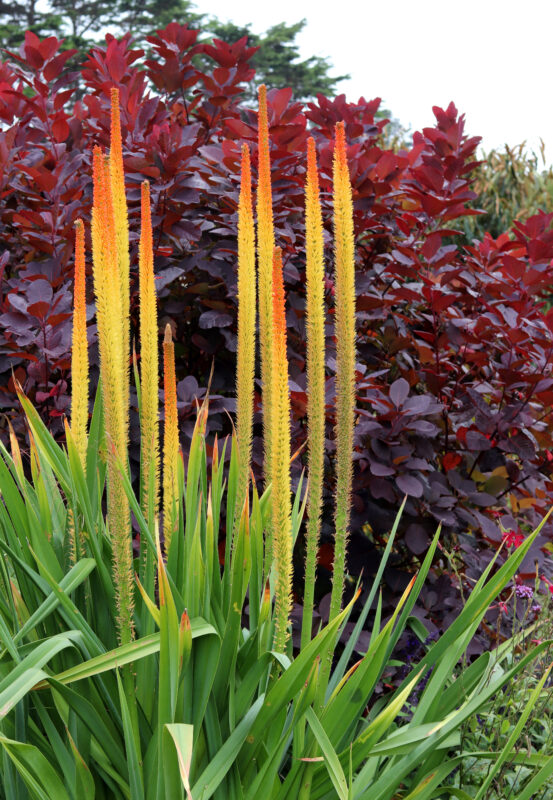
The Red Hot Poker plant (Kniphofia) is a dramatic addition to any garden, featuring elongated, tubular flowers that resemble fire pokers. Blooming throughout late summer, this perennial offers a fantastic spectacle with its vibrant red, orange, and yellow hues. Red Hot Poker thrives in sunny locations with well-drained soil, making it an attractive choice for sunny borders or rock gardens.
These eye-catching plants also attract hummingbirds and other pollinators, adding a lively dynamic to your garden. Their sturdy growth habit and unique flower shapes create breathtaking focal points, ensuring these vibrant flowers capture attention and admiration.
Dalmatian Bellflower
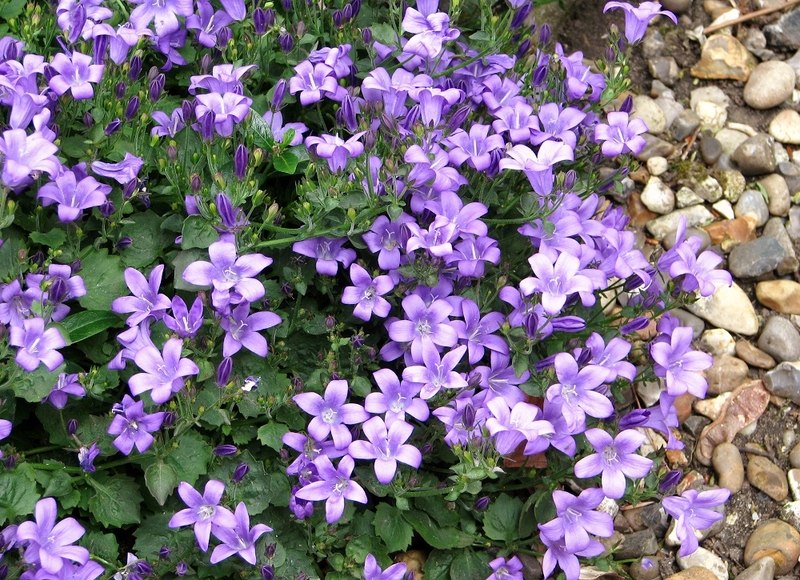
Campanula portenschlagiana, known as Dalmatian Bellflower, is a delightful and resilient perennial that blooms with charming blue-violet flowers throughout spring and into summer. Its low-growing habit and ability to spread make it ideal for ground cover or container gardening. This bellflower variety is particularly appreciated for its long blooming period and adaptability.
Dalmatian Bellflower prefers full sun to partial shade and thrives in well-drained soil. Its creeping nature makes it a perfect fit for rock gardens or as a border plant, where its lovely blooms and gentle spread can create a soft, charming atmosphere.
Fringed Bleeding Heart
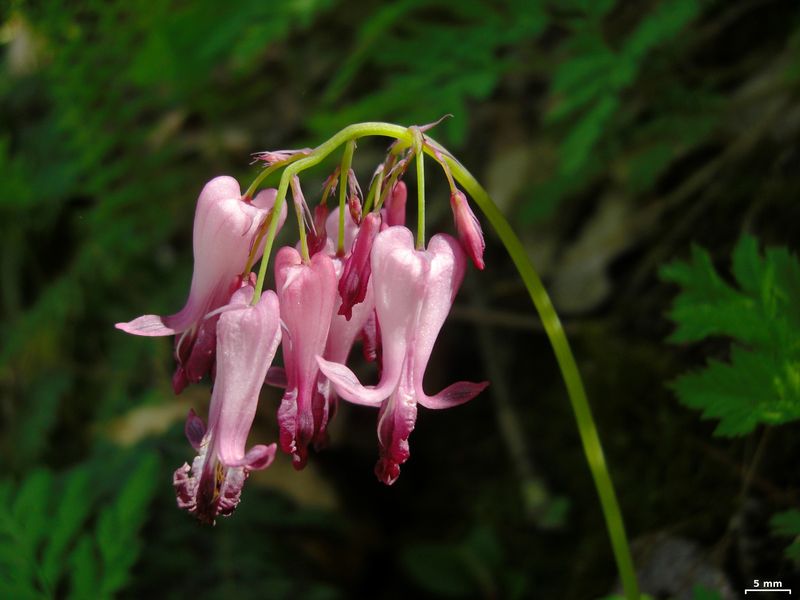
The Fringed Bleeding Heart (Dicentra eximia) is a charming woodland perennial that blooms in spring, presenting delicate heart-shaped flowers with fringed edges. Its unique, graceful blooms range in color from pink to white and stand out against lush green foliage. This plant thrives in partial shade, making it perfect for shaded garden spots and under the canopy of larger plants.
Fringed Bleeding Heart is known for its ability to bloom early in the season and continue until early summer, offering lovely shades of color when many other plants are still establishing themselves. Additionally, it attracts hummingbirds and other pollinators, enriching the biodiversity of the garden while providing a serene, romantic ambiance.


